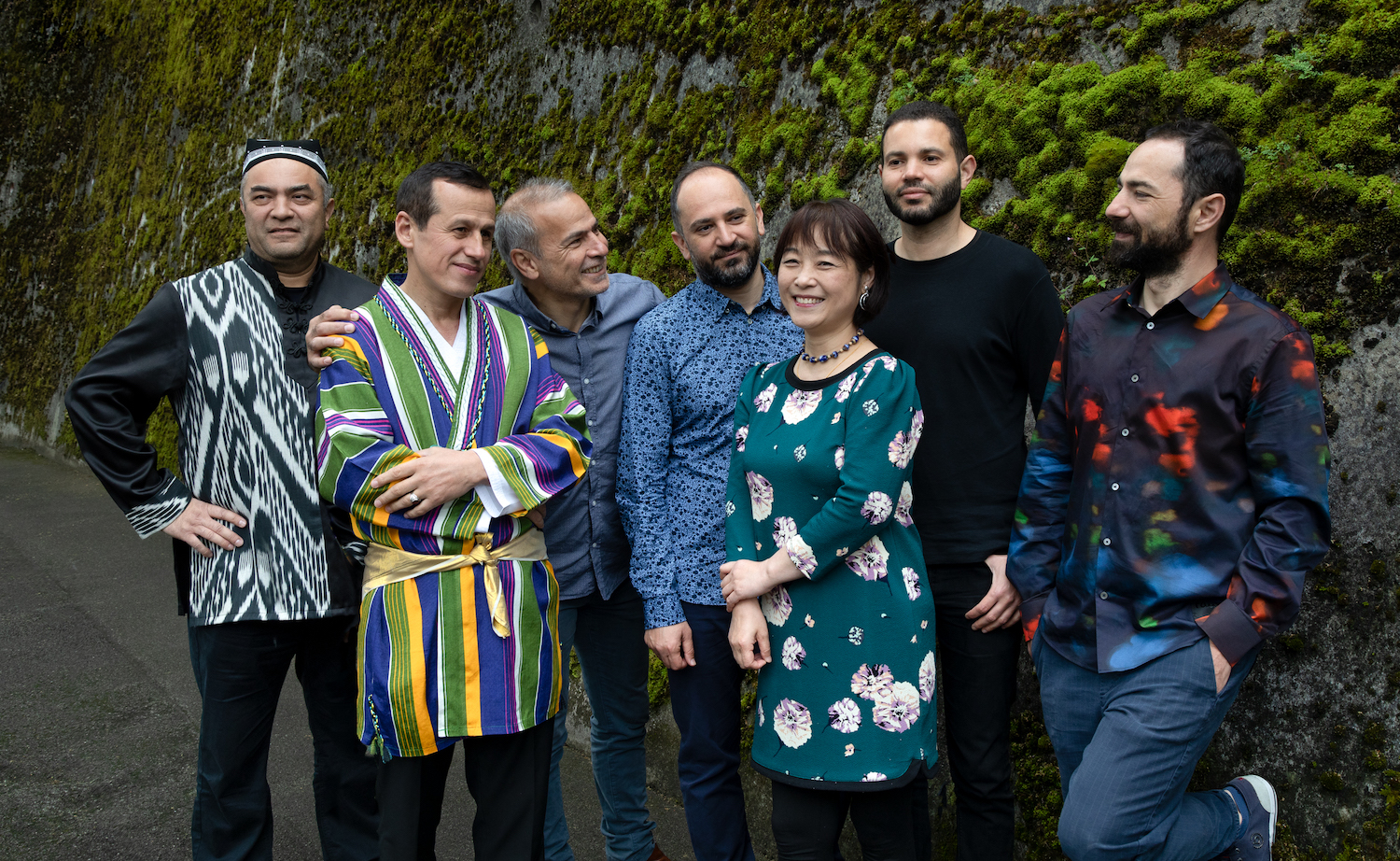Sunshine, peace and the smell of home

Founded in 2013 by the Aga Khan Music Programme, whose aim is to support contemporary expressions of Muslim musical heritage, the Aga Khan Master Musicians (AKMM) is a group where time, geography and cultures combine. Contemporary and historical music from east and west interacts to form the underpinnings of new compositions that reflect the diversity of the musicians involved.
Each ensemble member has contributed one or more pieces – composed over the years – to the release, with each track featuring its creator's chosen instrument. The song arrangements are the product of actual performance, developed through an organic process of experimentation and improvisation, ensuring each retains a unique freshness of character. Reminiscent of jazz, each track on Nowruz has a pre-existing framework that the musicians use as a foundation to build something spontaneous and exciting.
Wide-ranging cultural and musical traditions
The musicians in the AKMM represent cultures and musical traditions from the Middle East and Asia. Wu Man plays the pipa, a traditional Chinese plucked string instrument. Syrian Basel Rajoub plays saxophone, duclar (a reeded instrument similar to a clarinet) and doholla (a bass darbuka). His countryman Feras Charestan plays the harp-like qanun.
Sirojiddin Juraev, from Tajikistan, plays the dutar, a two-stringed plucked instrument originating in Persia, and its close musical relative the tanbur. Tunisian Jasser Haj Youssef plays the seven-stringed viola d'amore. Abos Kosimov, from Uzbekistan, plays that country's version of the frame drum, the doira, a type of jaw harp called a chang qobuz, and other percussion. The band is rounded out by guest musician Levent Yildirim from Turkey, who also plays the doholla.

It seems hard to fathom how this eclectic mix of musicians, instruments and cultures could even complement each other, let alone fit into each other's musical traditions.
Plucked and picked musical instruments work on the same principles, of course, but can a qanun from Syria harmonise with a pipa from China?
Can a piece written by a musician from Uzbekistan find common ground with the musical traditions of someone from Tunisia or China?
It turns out the answer to both of these questions is an emphatic yes. Of course, not all of the musicians feature in every piece. Three tracks – "Madad" by Basel Rajoub, Wu Man's "Autumn Flowers and Leaves" and Youseff's "Cadance" – are solos by their respective composers.
While each of these is a beautiful example of the artist's chosen instrument and testimony to their virtuosity, those that involve the entire ensemble are even more remarkable.
Not only do they each serve to demonstrate how the various instruments and musical backgrounds create a new whole, but they are also incredible pieces of music in their own right.
It's one thing to attempt to make something original for the sake of being original, it is quite another to transcend the process and realise a piece of art.
While intent is always important, it's no guarantee of artistic merit. On Nowruz we are given an example of both in perfect synthesis. Of course, this has a lot to do with both the musicians and the instruments they play. While Man's pipa is normally considered a solo instrument, she moves easily between the instrument's classical repertoire and its broader use, which includes playing with orchestras and other ensembles.
Developing new potential
Each of the musicians, no matter where they hail from, has taken it upon themselves to expand how and where their personal instrument is used. Playing everything from pop to jazz to traditional music, each of them has experimented and developed new tonal and stylistic potential. This willingness not to be defined by history and tradition, while at the same time respecting both, is what gives this album both its unique flavour and sound.
The opening song on the recording, "Tashkent", named for the capital city of Uzbekistan, fittingly features the entire AKMM ensemble. Written by Rajoub in commemoration of his first visit to the city, it is a homage to what he referred to as the "sunshine, peace, and smell of home" that he found there. Considering he wrote the piece in 2017, when his own country was being torn apart by civil war, these elements must have been incredibly important to him.
It is a celebratory dance: the various instruments come together in a joyful and happy confluence. While you can hear the distinct sound of each instrument during the playing of the piece, what fascinates is just how well they harmonise and complement each other. While the track is a wonderful affirmation of life in a peaceful city, just before the song ends there is a moment when Rajoub's reed instrument plays a soft solo. Haunting and beautiful, it injects a hint of sadness – the regret that not everyone can enjoy this type of revelry as they walk the streets of their own city.
The eighth song on Nowruz, "Mashq-i Dutar" is probably the best example of the improvisational techniques used by the ensemble to create its music. The word 'mashq' means an exercise or training, in this instance training on the dutar. For this tune, composer Sirojiddin Juraev has taken this simple concept and allowed his fellow musicians to run with it. Each of them expands upon the initial theme he establishes in the opening bars, building until the tune is transformed into an almost flamenco-like whirl in its intensity and tempo.
Not only is the song a wonderful and exuberant piece of music, and a fitting showcase for the talents of the individual musicians in AKMM, it also reveals the link between the music of North Africa – the Andalucian flamenco stylings – and central Asia. The ancient Silk Road was unarguably a conduit for more than just commercial goods.
Nowruz, from the Aga Khan Master Musicians is an amazing exploration of music, history, and culture – and how the three can intermingle in beauty and harmony, transcending borders and politics.
Richard Marcus
© Qantara.de 2023
